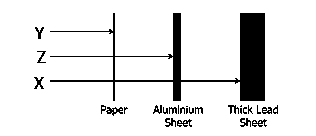
Physics Questions and Answers
If you want to learn more about the nature and properties of matter and energy or you're simply preparing for a Physics exam, these Physics past questions and answers are ideal for you.

If you want to learn more about the nature and properties of matter and energy or you're simply preparing for a Physics exam, these Physics past questions and answers are ideal for you.
The working of the beam balance is based on the principle of
moments
conservation of energy
equivalence
floatation
Correct answer is A
The working of the beam balance is based on the principle of moments. The principle of moments states that the sum of the clockwise moments on a beam must be equal to the sum of the counterclockwise moments on the beam. This means that the weight of the object on the left side of the beam must be multiplied by the distance from the fulcrum to the left side of the beam, and the weight of the object on the right side of the beam must be multiplied by the distance from the fulcrum to the right side of the beam. If these two products are equal, then the beam will be in equilibrium.
The branch of physics that deals with the motion of objects and the forces acting on them is called:
Electromagnetism
Thermodynamics
Mechanics
Quantum mechanics
Correct answer is C
Mechanics is the branch of physics that deals with the motion of objects and the forces acting on them. It is the foundation of all other branches of physics, and it is used to study everything from the motion of planets to the motion of electrons.
1.5 N
3.7 N
4.2 N
2.5 N
Correct answer is A
q=\(4.6 × 10^{-5}\), C= \(3.2 × 10^4\) \(Vm^{-1}\) F= ?
F=qE
⇒ \(4.6 × 10^{-5}\)C × \(3.2 × 10^4\)
; F= 1.5 N
0.94s
0.96s
0.93s
0.95s
Correct answer is B
d=312m.,T =263\(-10^°c\) = -10+273K = 263K, t=?
v= 331√ \(\frac{T}{273}\)
⇒ v = 331×√ \(\frac{263}{273}\)
⇒ v = 324.88 \(ms^-1\)
⇒ v = \(\frac{d}{t}\)
t = \(\frac{d}{t}\) = \(\frac {312}{324.88}\)
t = 0.96s

X = α-particle; Y = γ-ray; Z = β-particle
X = α-particle; Y = β-particle; Z = γ-ray
X = γ-ray; Y = α-particle; Z = β-particle
X = β-particle; Y = γ-ray; Z = α-particle
Correct answer is C
The penetrating power of alpha rays, beta rays, and gamma rays varies greatly. Alpha particles can be blocked by a few pieces of paper. Beta particles pass through paper but are stopped by aluminum foil. Gamma rays are the most difficult to stop and require concrete, lead, or other heavy shielding to block them.
Therefore, X = γ-ray; Y = α-particle; Z = β-particle